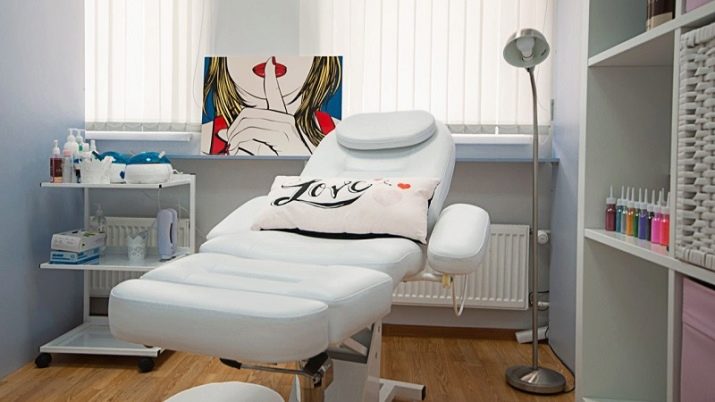How to get rid of leg hair?

The formation of hair on the human body is natural, but for many women, the appearance of excessive vegetation on the legs causes discomfort. Since ancient times, people have removed excess hair in a variety of ways and methods, many of them were unpleasant and even harmful to the skin and the body. Today, a lot of new methods have appeared that give excellent results not only in salons, but also at home.
Today, many salon procedures can get rid of hair permanently in just a few sessions, while at home you can painlessly remove vegetation in a few minutes.
Salon procedures
Many girls dream of a smooth and shiny skin without vegetation. Today, leg hair can be removed without any problems in beauty salons for a certain amount of money. Consider the most relevant and safe procedures that are in demand among people of all ages.

Electrolysis
This type of hair removal is a way to get rid of excess vegetation by applying an electric current to the hair follicles. With this method, you can remove any hair, however, it is worth knowing in advance that this technique involves working with very limited areas, while taking a lot of time. Usually, it may take several months, intermittently, for complete cleansing of vegetation, because only 50% of the hair is in the active phase. Electrolysis is considered effective, suitable for all hair types, but the procedure itself is not easy. Only a professional should work with the device.
In addition, most clients find the procedure very painful even if a cooling anesthetic is applied to the legs.
Gel
Gel hair removal is a fairly new procedure that is often used to remove unwanted vegetation on the legs. To some extent, it resembles the removal of hair with wax, only in this case, a special gel and strips are used. Gel hair removal is the development of domestic scientists. Already after the first session, the hair becomes much thinner, and after the procedure itself, the hair does not grow in and irritation does not appear.
The procedure should be repeated after 3-6 weeks. It all depends on how quickly the hair grows. Any special preparation for the procedure is usually not required. It is important that the hairs are about 0.5 cm.

Laser hair removal
Laser hair removal is one of the most effective ways to get rid of unwanted vegetation for a long period, and during the course of the course - forever. Today, many salons and centers of aesthetic cosmetology offer laser hair removal. It is of several types.
- Alexandrite. To work with this type of laser, the specialist must undergo special training. The alexandrite apparatus can only be used on well-cooled skin.
- Neodymium. This device is considered one of the most versatile, because it is used not only to remove vegetation, but also to get rid of tattoos.
- Ruby. This type of lasers is considered obsolete because people with dark and dark skin developed burns after it.
- Diode. One of the most popular, and most importantly, painless devices used today.
All varieties have their pros, cons, indications and contraindications for the procedure. It is very important that a real professional in his field works with the device. Many lasers are only allowed to work with medical professionals. The laser beam has a destructive effect on the pigment in the hair, called melanin. In most cases, the laser works very well on skin with dark hair, but light, red and gray hair can be removed far from the first time. In addition, only advanced diode lasers are suitable for working with blond hair.
To achieve the best effect, laser hair removal should be followed by a course.

Photoepilation
During photoepilation using a special apparatus, the follicles are irradiated with light pulses that destroy them. Hair growth slows down. After about 15 days, most of the hair has completely fallen out. To achieve a good result, you usually have to visit the salon 6-10 times.
Most often, photoepilation gives good results when working with dark hair and fair skin. Feels like you can feel only mild discomfort on your feet. Photoepilation may not give the expected results when working with light hair.
Elos epilation
This hair removal technology is considered advanced because it simultaneously acts on the hair follicles with the help of light and electricity. This type of hair removal is suitable for all types of hair. Special cooling during the procedure makes it not only safe, but also as painless as possible. The number of sessions usually depends on the structure of the hair and their number on the legs, it is discussed with the specialist individually.
To summarize, I would like to say that any of the above options will get rid of hair. But when working with devices, it is extremely important to initially get the advice of a specialist who can talk about possible contraindications, as well as assess the state of unwanted vegetation.

Home methods
Homemade methods allow you to quickly get rid of leg hair, but the result is not always happy. Along with the advantages, these procedures have many disadvantages.
Razor
A razor is one of the most common and effective ways to remove unwanted vegetation from your home, and in no time at all. With its help, any hair, including fine and coarse hair, is removed quickly and painlessly, the skin becomes smooth. But, perhaps, this is where the pros end. Depending on the razor, the epidermis may dry out later, especially after one-time use.
With a quick shave, you can get wounds and cuts, and the next day stubble will appear on your legs. In addition, ingrown hairs are very common after shaving.

Wax
Removing unwanted vegetation on your legs with wax is not a new procedure. Carrying it out in the salon is considered less painful than at home. However, a lot depends on the pain threshold. With the help of wax and special strips, hair is removed for 3-4 weeks. The skin remains smooth for about the first 14-16 days. With each subsequent removal of vegetation, it becomes more and more thin and invisible. The plus is that the wax has a caring effect on the skin. Today, for home use, you can purchase ready-made strips with wax applied to them or wax melters, but for them you need to purchase special paper napkins and separately cassettes with wax filler.
The day before the procedure, it is advisable to peel the skin of the legs. The hairs should be 3 mm long. A thin layer of wax is applied to a small area of the skin along hair growth, then a napkin is applied to it. It is necessary to wait a little and pull it sharply against hair growth. Once the treatment is complete, wax residues can be removed with a special oil with a soothing effect.
Creams
Hair removal creams work on the razor principle: they do not permanently remove vegetation, and after them bristles appear soon, usually after 2-3 days. All creams of this type contain in their composition a special substance that affects quite deeply the hair structure. The cream can be used before showering. It is applied to the legs and left for a short period of time according to the instructions. The product envelops the hair and weakens it, after which it can be easily removed with a special sponge or spatula.
This method has its pros and cons, but it should be understood that hair removal creams have a chemical composition to which an allergy may arise. In addition, they often do not have a very pleasant and specific smell.

Shugaring
Sugaring is essentially like waxing hair. However, in shugaring, ready-made sugar paste is used to remove vegetation. You can cook it yourself, but it's easier to purchase a ready-made composition. Sugar hair removal is believed to be a very ancient procedure. Today, many women and men use it especially actively.
Before applying the warm paste, the skin of the legs is degreased, sometimes a special talcum powder is applied. The paste itself is applied evenly to small areas against hair growth, and then abruptly removed. One piece of pasta can be used multiple times.
Folk remedies
Today, folk remedies for hair removal are rarely used, because they can cause negative effects on the skin, as well as various allergic reactions. It is best not to experiment with them without urgent need, preferring proven and modern techniques.
- Baking soda can help with unwanted hair growth. One teaspoon is mixed with a glass of boiling water. After the mixture has cooled, moisten a cotton pad in it and apply it to the skin, where it is necessary to remove vegetation, leave it overnight. The manipulation must be carried out repeatedly, after about a week the hair will begin to fall out. The procedure is quite difficult, the skin becomes dry from it.
- Hair is often removed with hydrogen peroxide, but it usually has a mediocre effect, only thinning and lightening the hairs. It is unlikely that it will be possible to remove them with this tool for a long time.
- There are many recipes with walnuts. Many people use unripe nuts, the halves of which are rubbed against the skin. Also, the shells of the nuts are burned, and the resulting ash is mixed with water and applied to the required areas.

What to choose?
You should choose one or another procedure for hair removal based on your own preferences, the condition of the skin and hair, and also taking into account all the contraindications to this or that procedure. Today there is no reliable information that someone has got rid of annoying vegetation forever using nuts, hydrogen peroxide or potassium permanganate. All of these products can cause irreversible effects on the skin. Therefore, before using them, it is very important to consult with a specialist in this matter. And also do not forget about individual intolerance.
The razor can be recommended as a sos-tool that can help get rid of hair at the right time., but on an ongoing basis, many experts do not recommend using it, because today there are many more effective ways to remove hair on the legs. If there is a fear of using a laser or at the moment it is not possible to complete the full course, we recommend that you pay attention to shugaring, which has practically no contraindications.
Sugaring and wax depilation allow you to gently remove hair for a long time without such negative consequences as ingrown hair and stubble, which often appear after a classic shave.









